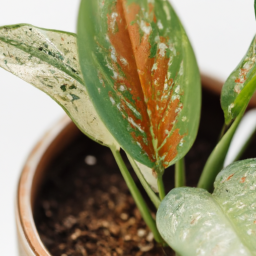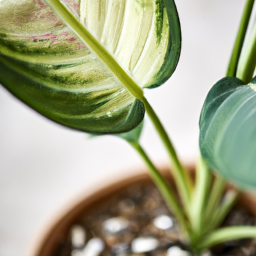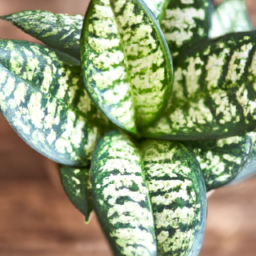
Are you looking to add some greenery to your home but worried about keeping your plants alive? Don’t worry, we’ve got you covered! In this blog post, we’ll be discussing the easiest house plants to keep alive. Whether you have a green thumb or not, these plants are perfect for beginners and experienced plant parents alike. So sit back, relax, and let’s dive into the world of low-maintenance house plants!
Low-Maintenance Houseplants for Beginners
Introduction
Are you looking to add some greenery to your home but worried about keeping plants alive? Don’t worry, there are plenty of low-maintenance houseplants that are perfect for beginners. These plants are easy to care for and can thrive in a variety of conditions, making them perfect for those with a busy schedule or a less-than-green thumb. In this guide, we’ll explore some of the easiest houseplants to keep alive, so you can enjoy the benefits of indoor plants without the stress.
Snake Plant
One of the easiest houseplants to keep alive is the snake plant. This plant is incredibly resilient and can survive in low light conditions, making it perfect for those with limited natural light in their home. Snake plants also require very little water, so you won’t have to worry about overwatering them. In fact, it’s better to let the soil dry out completely between waterings to prevent root rot.
To care for a snake plant, simply place it in a spot with indirect sunlight and water it sparingly. You can also fertilize the plant once or twice a year to promote healthy growth. With minimal effort, your snake plant will thrive and add a touch of green to your home.
Another great thing about snake plants is that they are known for their air-purifying properties. They can help remove toxins from the air, making them a great choice for improving indoor air quality. So not only are snake plants easy to care for, but they also offer health benefits as well.
In addition to their low-maintenance nature, snake plants come in a variety of shapes and sizes, making them a versatile option for any space. Whether you have a small apartment or a large house, there’s a snake plant that will fit perfectly in your home.
Pothos
Another low-maintenance houseplant that is perfect for beginners is the pothos. This plant is known for its trailing vines and lush green leaves, making it a popular choice for hanging baskets or shelves. Pothos plants are incredibly easy to care for and can thrive in a variety of lighting conditions, from low light to bright, indirect light.
To care for a pothos plant, simply place it in a spot with bright, indirect light and water it when the top inch of soil feels dry. Pothos plants are fairly forgiving when it comes to watering, so if you forget to water it occasionally, it should be fine. You can also trim the vines to promote new growth and keep the plant looking full and healthy.
One of the best things about pothos plants is that they are incredibly versatile and can be grown in a variety of ways. You can let the vines trail down from a hanging basket, train them to climb up a trellis, or even propagate new plants from cuttings. With a little bit of creativity, you can create a stunning display of pothos plants in your home.
In addition to their easy care requirements, pothos plants are also known for their air-purifying properties. They can help remove toxins from the air, making them a great choice for improving indoor air quality. So not only are pothos plants easy to care for, but they also offer health benefits as well.
Spider Plant
If you’re looking for a low-maintenance houseplant that is easy to care for and looks great in any space, consider adding a spider plant to your home. Spider plants are known for their long, arching leaves and small white flowers, making them a popular choice for hanging baskets or shelves. These plants are incredibly easy to care for and can thrive in a variety of lighting conditions.
To care for a spider plant, simply place it in a spot with bright, indirect light and water it when the top inch of soil feels dry. Spider plants are fairly forgiving when it comes to watering, so if you forget to water it occasionally, it should be fine. You can also trim the plant to promote new growth and keep it looking full and healthy.
One of the best things about spider plants is that they are incredibly easy to propagate. They produce small plantlets, or baby spider plants, that can be easily rooted in water or soil to create new plants. This makes spider plants a great option for beginners who want to expand their plant collection without spending a lot of money.
In addition to their easy care requirements, spider plants are also known for their air-purifying properties. They can help remove toxins from the air, making them a great choice for improving indoor air quality. So not only are spider plants easy to care for, but they also offer health benefits as well.
By choosing low-maintenance houseplants like snake plants, pothos, and spider plants, you can enjoy the benefits of indoor plants without the stress of high maintenance. These plants are easy to care for, resilient, and offer a variety of health benefits, making them perfect for beginners. So go ahead and add some greenery to your home with these easy-to-care-for houseplants.

Indoor Plants That Thrive with Minimal Care
Snake Plant
The Snake Plant, also known as Mother-in-Law’s Tongue, is a popular choice for those looking for a low-maintenance indoor plant. This plant is incredibly resilient and can thrive in a variety of conditions, making it perfect for beginners or those with busy schedules. Snake Plants are known for their striking vertical leaves that come in a variety of shades and patterns, making them a great addition to any home decor.
One of the key reasons why Snake Plants are so easy to care for is their ability to tolerate low light conditions. This means that they can thrive in rooms with minimal natural light, making them a great option for offices or bathrooms. Additionally, Snake Plants only need to be watered every 2-6 weeks, depending on the humidity levels in your home. Overwatering is one of the biggest threats to this plant, so it’s important to let the soil dry out completely between waterings.
Another benefit of Snake Plants is their air-purifying properties. They are known to remove toxins such as formaldehyde and benzene from the air, making them a great choice for improving indoor air quality. To keep your Snake Plant healthy, it’s important to avoid placing it in direct sunlight, as this can cause the leaves to burn. Overall, the Snake Plant is a great choice for those looking for a low-maintenance indoor plant that can thrive with minimal care.
Pothos
Pothos, also known as Devil’s Ivy, is another easy-to-care-for indoor plant that is perfect for beginners. This plant is known for its trailing vines and heart-shaped leaves, making it a popular choice for hanging baskets or shelves. Pothos plants come in a variety of colors, including green, variegated, and neon, making them a versatile addition to any indoor space.
One of the key reasons why Pothos is so easy to care for is its ability to thrive in low light conditions. This plant can adapt to a variety of lighting situations, from bright indirect light to low light, making it a great choice for rooms with limited natural light. Pothos plants only need to be watered when the top inch of soil is dry, making them a low-maintenance option for busy plant owners.
In addition to their easy care requirements, Pothos plants are also known for their air-purifying properties. They can remove toxins such as formaldehyde and benzene from the air, making them a great choice for improving indoor air quality. To keep your Pothos plant healthy, it’s important to avoid overwatering, as this can lead to root rot. Overall, Pothos is a great choice for those looking for a low-maintenance indoor plant that can thrive with minimal care.
Spider Plant
Spider Plants are another popular choice for those looking for an easy-to-care-for indoor plant. These plants are known for their long, arching leaves that resemble spider legs, making them a unique addition to any indoor space. Spider Plants come in a variety of colors, including green and variegated, making them a versatile option for adding a pop of color to your home decor.
One of the key reasons why Spider Plants are so easy to care for is their ability to thrive in a variety of lighting conditions. These plants can adapt to low light, bright indirect light, or even direct sunlight, making them a great choice for any room in your home. Spider Plants only need to be watered when the top inch of soil is dry, making them a low-maintenance option for those with busy schedules.
In addition to their easy care requirements, Spider Plants are also known for their air-purifying properties. They can remove toxins such as formaldehyde and xylene from the air, making them a great choice for improving indoor air quality. To keep your Spider Plant healthy, it’s important to avoid overwatering, as this can lead to root rot. Overall, Spider Plants are a great choice for those looking for a low-maintenance indoor plant that can thrive with minimal care.

Easy-to-Care-for Houseplants for Busy Individuals
Choosing the Right Plants
When it comes to selecting houseplants that are easy to care for, there are a few key factors to keep in mind. First and foremost, consider the amount of natural light that is available in your home. Some plants thrive in bright, direct sunlight, while others prefer low light conditions. Additionally, think about the amount of time you are able to dedicate to plant care. If you have a busy schedule, opt for plants that require minimal maintenance.
One popular choice for busy individuals is the snake plant, also known as Sansevieria. This hardy plant can thrive in a variety of light conditions, from bright sunlight to low light. It requires very little water, making it an ideal choice for those who may forget to water their plants regularly. Another low-maintenance option is the pothos plant, which is known for its trailing vines and heart-shaped leaves. Pothos plants can thrive in a range of light conditions and only need to be watered when the soil is dry to the touch.
If you are looking for a plant that can add a pop of color to your space, consider the ZZ plant. This plant has glossy, dark green leaves that can brighten up any room. It is extremely resilient and can tolerate neglect, making it a great choice for busy individuals. Another colorful option is the spider plant, which has long, arching leaves with white stripes. Spider plants are easy to care for and can thrive in a variety of light conditions.
Caring for Your Plants
Once you have selected the right plants for your home, it is important to establish a regular care routine to ensure they thrive. One of the most important aspects of plant care is watering. It is essential to water your plants consistently, but be sure not to overwater them. Most houseplants prefer to dry out slightly between waterings, so be sure to check the soil moisture before watering.
In addition to watering, it is important to provide your plants with the proper amount of light. Place your plants in a location where they will receive the appropriate amount of sunlight for their specific needs. If you are unsure of the light requirements for your plants, do some research or consult with a local plant nursery for guidance.
Lastly, be sure to keep an eye out for any signs of pests or disease on your plants. Common pests include spider mites, mealybugs, and aphids, which can be treated with insecticidal soap or neem oil. If you notice any yellowing leaves, brown spots, or other signs of distress, investigate the issue and take appropriate action to remedy the situation.
Tips for Success
To ensure the success of your houseplants, consider the following tips:
1. Rotate your plants regularly to ensure even growth and prevent them from leaning towards the light source.
2. Dust your plant leaves regularly to allow for optimal light absorption.
3. Consider using a humidifier or placing a tray of water near your plants to increase humidity levels.
4. Repot your plants as needed to provide them with fresh soil and room to grow.
5. Keep a plant journal to track watering schedules, growth patterns, and any issues that may arise.
By following these tips and selecting the right plants for your home, you can enjoy the beauty of houseplants without the stress of high-maintenance care. Remember, a little bit of love and attention goes a long way in keeping your plants happy and healthy.
Here’s the Summary Snapshot
If you struggle to keep houseplants alive, don’t worry – you’re not alone! Many people find it challenging to keep their indoor greenery thriving, but there are some plants that are much easier to care for than others. One of the simplest houseplants to keep alive is the pothos plant. Pothos plants are incredibly resilient and can thrive in a variety of lighting conditions. They require minimal watering and can even survive if you forget to water them for a while. Plus, pothos plants are excellent at purifying the air in your home, making them a great choice for beginners.
Another easy-to-care-for houseplant is the snake plant. Snake plants are known for their ability to thrive in low light conditions and can go for extended periods without water. These plants are also excellent at purifying the air and are virtually indestructible, making them a great choice for those who tend to forget about their plants. With just a little bit of care and attention, these low-maintenance houseplants can add a touch of greenery to your home without requiring too much effort on your part. So if you’re looking to add some greenery to your space but don’t have a green thumb, consider adding a pothos plant or snake plant to your indoor garden.
Your Questions Answered. Comprehensive FAQ:
Q1. What are some of the easiest house plants to keep alive?
A1. Some of the easiest house plants to keep alive include snake plants, pothos, spider plants, peace lilies, and succulents. These plants require minimal care and are great for beginners.
Q2. How often should I water my easy-to-care-for house plants?
A2. It’s important to let the soil dry out between waterings for most easy-to-care-for house plants. Depending on the plant, this could range from once a week to once every few weeks. Be sure to check the soil moisture before watering.
Q3. Do easy-to-care-for house plants require a lot of sunlight?
A3. Most easy-to-care-for house plants prefer bright, indirect sunlight but can also tolerate low light conditions. Place your plants near a window where they can get some natural light, but be careful not to expose them to direct sunlight for too long.
Q4. How can I prevent overwatering my easy-to-care-for house plants?
A4. To prevent overwatering your easy-to-care-for house plants, make sure the pots have drainage holes at the bottom. Water the plants only when the top inch of soil is dry to the touch. It’s better to underwater than to overwater, as most house plants are more tolerant of drought than excess moisture.
Q5. What are some signs that my easy-to-care-for house plant is not thriving?
A5. Signs that your easy-to-care-for house plant is not thriving include yellowing or browning leaves, wilting, stunted growth, or a lack of new growth. These could be indicators of overwatering, underwatering, lack of sunlight, or pests. It’s important to address these issues promptly to help your plant recover.

James Wong is a renowned ethnobotanist, plant scientist, and local television presenter. With a passion for demystifying plant science, he is known for translating complex botanical concepts into practical advice for everyday plant enthusiasts. James’s expertise spans from traditional gardening to cutting-edge plant technologies, making his insights accessible and informative.


